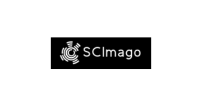OPHTHALMOLOGICAL EVALUATION OF SHEEP FROM THE ALENTEJO REGION - PORTUGAL
DOI:
https://doi.org/10.5380/avs.v1i1.77164Keywords:
IOP, merino sheep, ophthalmoscopy, STT, tear pHAbstract
Considering the importance of the flock of Alentejo sheep, the goal of this study was to determine the average values of eye examinations, evaluate the ophthalmoscopic features and fluorescein staining for Merino sheep from Alentejo region, in Portugal. The 48 eyes of 24 healthy, female sheep belonging to the sheep flock at the University of Évora were evaluated. The average values obtained for Schirmer tear test (STT) were 19.0 ± 5.22 mm/min, with a reduction of tear production varying according to the age of the animal, for tear pH were 7.7 ± 0.48 and for intraocular pressure (IOP) was 12.7 ± 3.03 mmHg. Fundus aspects were observed in the tapetal area with shades of blue, green and yellow. The optic disc was predominantly in the transition area between tapetal and non-tapetal regions of elliptical shape, with holoangiotic vascular pattern. None of the animals showed fluorescein staining on the ocular surface. In the context of the investigation, these data may be useful to improve the clinical approach to the species and reference standards of the exam’s values
Downloads
Published
How to Cite
Issue
Section
License
Authors that wish to publish in AVS agree with the following conditions:
- To keep copyright of the article and allow the AVS to publish the first time. The article will be licensed by Creative Commons - Atribuição 4.0 Internacional allowing the sharing of their work.
- Authors may distribute their work by other channel of distribution (ex.: local or public repository).
- Authors have the permission to publish their work online, using different channels (similar to above), even before the final editorial process.













